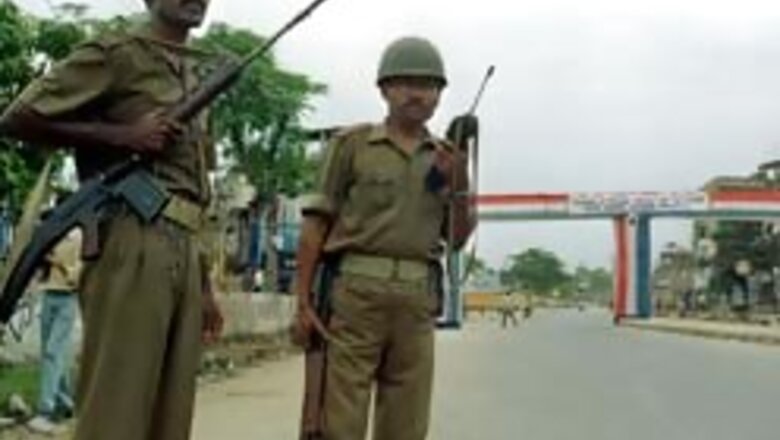
views
Guwahati: People in Assam are calling it the lull before the storm. The cease-fire in the state is over and everybody is waiting for the shooting to begin.
A month ago a shaky peace descended on insurgency-ravaged Assam when the Army and the United Liberation Front of Assam (ULFA) began a cease-fire. The idea was to start a peace process through negotiations and find solution to issues raised by the ULFA, which is waging a violent movement for a sovereign Assam.
The cease-fire was the first time in 27 years that the ULFA had indicated that it was willing to shun violence. On September 23, the Centre withdrew the ceasefire and ordered full-fledged army operations against the outfit. Hopes of peace were shattered.
Why the cease-fire failed
On the face of it the reasons looks simple. The Centre insisted on a written commitment from the ULFA that it would hold talks. It also wanted a list of top ULFA leaders who could discuss the peace process. The list never came.
Instead, the ULFA shot dead a policeman and killed a tea garden manager while the cease-fire was still in place. It allegedly used the cease-fire period to regroup and extort money from people.
The ULFA demanded that the Centre first release its five jailed leaders. The Centre refused, fearing that the militants would go underground if they were released
The ULFA rejected the Centre’s demands and alleged that it was using the cease-fire to mobilize troops.
Negotiations versus hot pursuit
The home and defence ministries disagreed with each other on how to deal with the ULFA. The Army was reportedly not happy with the Home Ministry's initiatives to start negotiations.
Sources say that the Army is convinced that given a free hand it can wipe out the ULFA. History though doesn’t prove that.
PAGE_BREAK
In the history of North-eastern insurgency, not once has the Army succeeded in wiping out insurgency completely on its own. Be it the National Socialist Council of Nagaland, the erstwhile Mizo National Front (MNF), the Bodo Liberation Tigers (BLT), separatist groups have fought till they were invited to talks.
Security forces were significant in getting these groups to talk, but to end insurgency solely through force? It doesn't happen, not in the Northeast. And there are no reasons to believe that it will happen in the case of ULFA.
The group has lost mass support in recent years but all it needs to sustain an insurgency movement is disgruntled, unemployed youth and firepower. The Naga insurgency, South Asia's oldest such movement, still continues and the Army is far from ending it.
The Pakistan connection
Most of ULFA leaders now live in Bangladesh under the active patronage of Pakistan's Inter Services Intelligence (ISI) and its Bangladeshi counterpart the Directorate General of Forces Intelligence (DGFI).
According to intelligence reports, ULFA's commander-in-chief Paresh Barua lives in Dhaka and uses several aliases. Given his track record, the Centre doubts Barua's sincerity to find a genuine solution to the problem.
What is happening on the ground now?
Security forces and the ULFA are back to shooting at each other. The Army has carried out flush-out operations in ULFA strongholds of Upper Assam. Reports say a sustained military operation is likely in the Arunachal -Myanmar sector, which ULFA cadre use to escape.
The Centre claims that the ULFA was never sincere about the peace process. The ULFA makes the same allegations against the Centre. The next step may well be violence.



















Comments
0 comment